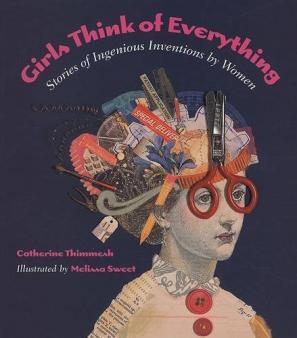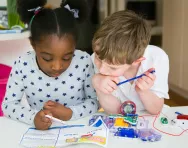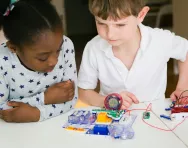TheSchoolRun.com closure date
As we informed you a few months ago, TheSchoolRun has had to make the difficult decision to close due to financial pressures and the company has now ceased trading. We had hoped to keep our content available through a partnership with another educational provider, but this provider has since withdrawn from the agreement.
As a result, we now have to permanently close TheSchoolRun.com. However, to give subscribers time to download any content they’d like to keep, we will keep the website open until 31st July 2025. After this date, the site will be taken down and there will be no further access to any resources. We strongly encourage you to download and save any resources you think you may want to use in the future.
In particular, we suggest downloading:
- Learning packs
- All the worksheets from the 11+ programme, if you are following this with your child
- Complete Learning Journey programmes (the packs below include all 40 worksheets for each programme)
You should already have received 16 primary school eBooks (worth £108.84) to download and keep. If you haven’t received these, please contact us at [email protected] before 31st July 2025, and we will send them to you.
We are very sorry that there is no way to continue offering access to resources and sincerely apologise for the inconvenience caused.
Science, technology, engineering and maths for girls

We live in a world where we’re told that girls can do anything that boys can do, but when it comes to choosing a career, there’s still a stark gender divide.
According to the latest figures, only 12 per cent of the workforce in science, technology, engineering and mathematics (STEM) industries is female.


Download fantastic science resources today!
- Experiments And Science Fun pack
- Science Learning Programme for each school year
- All the instructions, questions and information you need
Seven out of 10 parents believe that other subjects offer better career opportunities for girls, and last year, only 4228 girls applied to study engineering at university, compared to 28,020 boys.
Why STEM for girls?
Encouraging girls to take an interest in STEM subjects is not just a matter of principle. ‘The engineering industry alone needs to recruit 182,000 skilled professionals in the next 10 years,’ explains Jonathan Narbett, head of operations at the Queen Elizabeth Prize for Engineering, which celebrates engineering success. ‘Currently, only seven per cent of the workforce in the field is female, so encouraging more women is an obvious way to make up the shortfall.’
Studying STEM subjects opens up a wide range of career opportunities. ‘Girls often think of the technology industry as a boring, male-dominated world where people sit in dark basements with computers,’ explains Laura Ferguson of computer club initiative TechFuture Girls. In reality, STEM roles exist in just about every field, including those that may more typically appeal to girls, such as music production, food technology and fashion and footwear design.
A good grounding in STEM also makes your daughter more employable. Research shows that among employers seeking graduates without a specific degree discipline, half prefer to hire those with STEM degrees.
But perhaps the most important reason for girls to develop an interest in STEM is because there’s no reason not to! ‘The industry does have a stereotype of being more suitable for boys, but in fact, girls often outperform boys in STEM subjects,’ says Laura.
Developing an early interest
Experts believe that the key to encouraging girls to develop an interest in STEM is to catch them early. ‘Our research showed that girls start turning off STEM between the ages of 10 and 14,’ explains Laura. ‘This is also the age where children start making initial decisions about their future career options.’
Jonathan agrees. ‘STEM subjects have a reputation for being difficult to get into,’ he says. ‘Pupils are also assigned to gender-specific subjects at an early age. If you can move away from this at primary level, it’s much easier for girls to keep their options open as they get older.’
Progress is being made. The 2014 National Curriculum introduced computing as a mandatory subject for Key Stage 2 pupils, meaning that girls and boys are now all learning important skills like coding. But how else can girls be encouraged to develop an interest in STEM?
Enthusiasm-inspiring initiatives
There is a growing range of campaigns and projects designed to ignite children’s passion for STEM – particularly among girls. TechFuture Girls is one of these. ‘We give schools free resources to run extracurricular clubs for girls, so they can work collaboratively on tech projects without boys taking over,’ explains Laura.
Another trend is for STEM companies to send mentors into schools to develop children’s skills and interest. ‘We send young male and female engineers into primary schools to do things like games and workshops, giving children an idea of the opportunities that are open to them,’ Jonathan says. STEM Learning also has an outreach programme, with 40 per cent of its ambassadors being women.
There are also a number of STEM-related competitions open to primary school children, such as Make IT Happy (where children are encouraged to help people in their community learn new IT skills) and the Greenpower Trust events (where KS2 children design and race their own electric cars).
Nurturing a passion for STEM
While schools are putting an increasing emphasis on encouraging girls to take an interest in STEM, parents play an important part too: research shows that only 10 per cent of parents talk to their daughters about engineering. The good news is that there are many ways in which you can help your child develop a passion for STEM.
- Use TV and internet resources. Programmes such as CBeebies’ Nina and the Neurons are intended for young children. Older children rate series like Absolute Genius on CBBC and The Gadget Show for fuelling their interest in STEM.
- Sign your daughter up for a club. If your child’s school doesn’t already run an extracurricular STEM club for girls, point them in the direction of TechFuture Girls’ free resources. Or look for an out-of-school club such as Imagineering.
- Get out and about. Visits to places like science museums are a great way to get hands-on with STEM. Also, check out the annual Big Bang Fair for young scientists and engineers.
- Make the most of technology. Encourage your daughter to use the computer or tablet not just for games and videos, but also for learning to code through free apps like Scratch Jr.
- Talk about STEM careers. Introduce your child to female role models in the field, discuss STEM concepts at home and out and about, talk about the career opportunities within STEM industries, and so on. If you work in a STEM-related career, take your child to work for the day. Big Bang World is a website where your child can explore STEM activities, videos and career talks.
- STEM employers are keen to nurture girls' interest in STEM subjects. Over the next six years, 640,000 STEM industry positions will need to be filled (there is currently a 40,000 shortfall in graduates for STEM-based roles) and only 36% of female graduates choose science subjects, despite girls out-performing boys in science in school examinations (74% A-C vs 69% A-C). Initiatives such as EDF Energy's Pretty Curious aim to inspire girls to make a difference in the world using STEM subjects. Their virtual reality video featuring the work of female scientists can be watched using a VR headset or phone app.
- Learn through play. STEM-related toys have traditionally been biased towards boys, such as Meccano and Lego, but new ranges such as GoldieBlox are designed especially to encourage girls to develop an interest in STEM.













